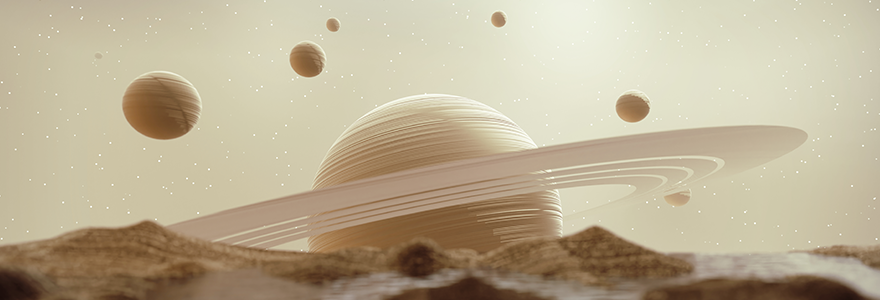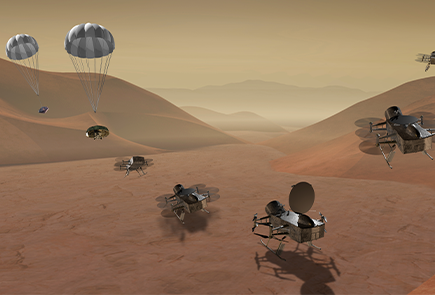Dragonfly: Searching for Evidence of Life on Titan

Humanity’s search for extraterrestrial life has taken us to a number of nooks and crannies across the universe. From thermal vents on Mars to exoplanets well outside of our own Solar System, numerous investigations are underway. Common to all of these searches is the identification of certain physical essentials for the beginnings of life: a temperature range that could be conducive to carbon-based life forms, the presence of water, and/or molecules containing carbon and hydrogen.
"In many cases, searches begin here because we know that our own Earthly life forms require them. These physical signatures are a great way to help filter out a lot of the places that we know wouldn’t likely harbour evidence of life,” explains Catherine Neish of the Department of Earth Sciences at Western. Neish is the astrobiology team lead on NASA’s Dragonfly mission, searching for evidence of life on Titan, the largest of Saturn’s moons.
Her interest in the search for life beyond our planet finds its roots in her early career experiments on what Neish affectionately refers to as “pre-biotic goo.” The goo, consisting of molecules containing nitrogen, carbon, and hydrogen, is the source material for some of the most important building blocks of life: amino acids. “Under certain conditions, like high heat, or electrical current, these molecules can reliably form amino acids – spontaneously!” says Neish. Now occupying a leadership role on a planned NASA mission, she is looking to the icy, saturnine moon of Titan to see if its pre-biotic goo could hold the key to life.
 “Dragonfly is going to land what is essentially a half-ton drone on Titan so that it can carry out chemical tests on various surfaces,” explains Neish. While the moon is covered in ice, what really interests Neish and her colleagues is liquid water. “Titan is home to cryovolcanoes, remarkable structures which erupt with liquid water instead of lava. In its liquid form, this water is the perfect place to check for evidence of life.”
“Dragonfly is going to land what is essentially a half-ton drone on Titan so that it can carry out chemical tests on various surfaces,” explains Neish. While the moon is covered in ice, what really interests Neish and her colleagues is liquid water. “Titan is home to cryovolcanoes, remarkable structures which erupt with liquid water instead of lava. In its liquid form, this water is the perfect place to check for evidence of life.”
Titan also has a subsurface ocean of water, buried many kilometers deep. It is known that the hostile, frigid surface is covered with plenty of organic building blocks, but if they made their way down to the liquid regions, the conditions would be ripe for the spontaneous formation of life. “Most likely, tectonic processes would bring these important molecules down to the subsurface. The Dragonfly mission will be measuring the ocean waters for these key building blocks. “What we may end up finding, rather than actual life, are signs or precursors of life,” explains Neish. Titan has some mind-bending conditions – liquid water can exist at -100°C, meaning that life would have to adapt accordingly. “Even on Earth we have some extraordinary life forms, like extremophilic bacteria, that can survive harsh conditions.”
Many places within our Solar System have water – or at least ice. But the combination of organic molecules and water is what makes Titan the best place in the Solar System to look for life, in Neish’s opinion. We will still have to wait a few years before the mission takes off, however, once it does, we may never look at the striking, ringed planet in the same way again.

